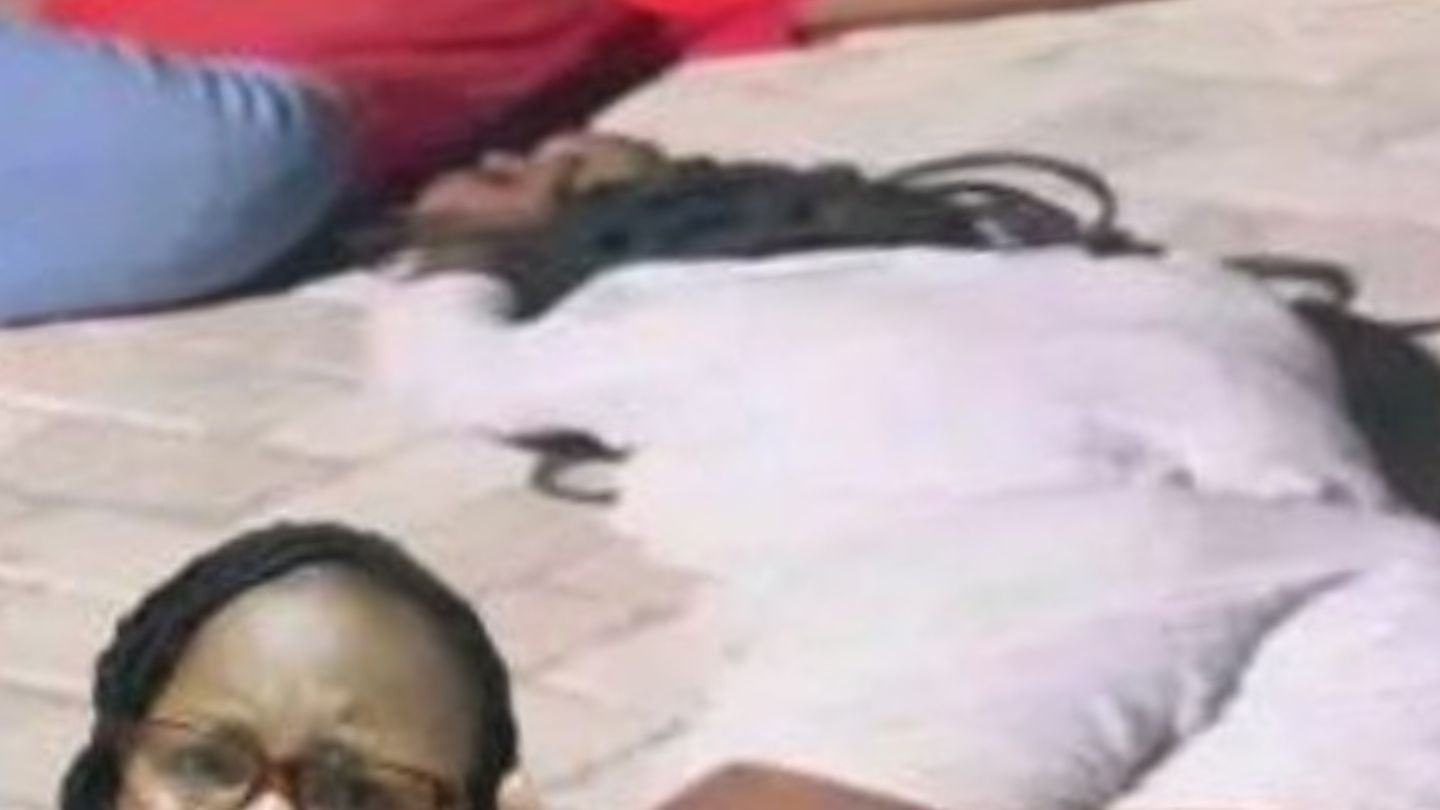

The Githurai massacre, an event that has recently gained significant attention on social media platforms, particularly Telegram, has left many shocked and horrified. This comprehensive article aims to shed light on the details of the massacre, its aftermath, the role of social media in spreading the news, and the wider implications of such tragic events.

I. Githurai Massacre: What happened?
Overview of the event
The Githurai massacre took place in Githurai, a densely populated suburb of Nairobi, Kenya. A violent confrontation on the night of June 14, 2024 resulted in the death of more than 30 people and injuries to many others. The massacre involved armed killers targeting residents, causing widespread panic and chaos.

Event Details:
| Description | Information |
|---|---|
| Place | Githurai, Nairobi, Kenya |
| date | 14 June 2024 |
| Time | Around 10:30 p.m. |
| Death toll | 30+ |
| Number of injuries | 50+ |
eyewitness accounts
Witnesses reported hearing gunfire and screams throughout the night. Many described the scene as chaotic, with people running for their lives and seeking shelter wherever possible. The killers were reportedly heavily armed and showed no mercy, targeting anyone who got in their way.
Key eyewitness accounts:

| Witness | Account Description |
|---|---|
| John M., resident | “I heard gunfire and saw people running. It was terrifying.” |
| Sarah K., shop owner | “They came into my shop and started firing. I hid under the counter.” |
| Peter N., Viewer | “I saw bodies on the ground. It was a nightmare.” |
 Githurai Massacre Telegram Link
Githurai Massacre Telegram Link
II. The role of social media
Dissemination of information on Telegram
News of the Githurai massacre spread rapidly on Telegram, where users shared videos, photographs, and first-hand accounts of the incident. Telegram’s encrypted messaging service allowed for the quick dissemination of information, but also raised concerns about the accuracy and verifiability of shared content.
Telegram Engagement:

| Metric | price |
|---|---|
| initial stock | 5,000+ within the first hour |
| Total Shares | 100,000+ within 24 hours |
| Main Hashtags | #GithuraiMassacre, #PrayerForGithurai |
Effect on public perception
The viral nature of the massacre on social media platforms significantly influenced public perception. Although it drew immediate attention to the tragic incident, it also spread misinformation and fueled tensions within the community.
Public response:

| aspect | Description |
|---|---|
| immediate response | An outpouring of grief and support |
| Misinformation spread | Unverified reports and rumours |
| community tension | Increased fear and suspicion |
Third, government and law enforcement response
Immediate Action
In response to the massacre, the Kenyan government deployed additional security forces to Githurai to restore order and apprehend the perpetrators. Law enforcement agencies launched a full-scale investigation to identify and apprehend those responsible for this heinous act.
Government Actions:

| action | Description |
|---|---|
| Deployment of security forces | Increased police and military presence |
| Investigation | Extensive investigation by law enforcement |
| public statement | Condemnation of violence and promise of justice |
Challenges faced
The investigation faced many challenges, including identifying the killers, gathering credible evidence, and addressing fear and mistrust within the community. The complexity of the incident required the coordinated efforts of multiple law enforcement agencies and community leaders.
Challenges:
| challenge | Description |
|---|---|
| Identification of the attackers | Difficulty in identifying criminals |
| Evidence Collection | Gathering credible and admissible evidence |
| community relations | Rebuilding trust and cooperation with residents |
IV. The victims and their stories
Profile of victims
The Githurai massacre claimed the lives of various individuals, including men, women, and children. Each victim had their own story, and their loss has deeply affected their families and community.
Victim Profile:
| victim | Description |
|---|---|
| Mary N., teacher | Dear teacher and mother of two children |
| James L., shopkeeper | Well-known local business owner |
| Amina H., Student | A promising young student who dreams of becoming a doctor |
Impact on families
The massacre has left a deep impact on the families of the victims. Many are struggling to come to terms with the sudden loss of their loved ones and demand justice and redress.
Family influence:
| aspect | Description |
|---|---|
| Emotional trauma | Grief and psychological effects |
| financial hardship | Loss of breadwinners and financial stability |
| Search for justice | Families demand accountability and justice |
V. Broader implications
Social and political impact
The Githurai massacre has highlighted important social and political issues in Kenya, including the need for better security measures, the importance of addressing systemic violence, and the role of social media in crisis situations.
intent:
| aspect | Description |
|---|---|
| safety measures | Calls for increased security and law enforcement reforms |
| Systemic violence | Focus on addressing the root causes of violence |
| Social media role | Examining the impact of social media on public perception |
role of media
Media coverage of the Githurai massacre has played an important role in shaping public debate. Both traditional and social media have drawn attention to the incident, but have also faced criticism for sensationalising the tragedy and spreading misinformation.
media coverage:
| aspect | Description |
|---|---|
| traditional media | News reports, editorials and investigative journalism |
| social media | Real-time updates, user-generated content, and viral posts |
| Criticisms | Concerns about sensationalism and misinformation |
VI. Moving Forward
Community treatment and support
Following the massacre, efforts are underway to support the families of the victims and the broader Githurai community. These include counselling services, financial aid, and community-led initiatives to promote healing and unity.
Support initiatives:
| Initiative | Description |
|---|---|
| consulting services | Psychological support for affected persons |
| financial help | Help for families facing financial difficulties |
| Community Integration Program | Initiatives to promote healing and reconciliation |
preventative measures
To prevent such tragedies in the future, it is necessary to implement measures that address the underlying causes of violence and improve community safety. This includes strengthening law enforcement, promoting social cohesion, and leveraging technology for early warning systems.
preventative measures:
| remedy | Description |
|---|---|
| Strong law enforcement | Better training, resources and community policing |
| social unity | Programs to promote understanding and cooperation |
| technology | Use of technology for early warning and rapid response |
conclusion
The Githurai massacre is a tragic reminder of the fragility of peace and the devastating impact of violence on communities. As investigations continue and communities seek healing, it is vital to address the root causes of such incidents and work towards a safer, more cohesive future. The role of social media, both as a tool for spreading information and a platform for misinformation, must be carefully managed to ensure it contributes positively to crisis situations. Through collective efforts, it is possible to prevent future tragedies and build more resilient societies.
Appendix: Detailed Analysis
Event Timeline
| Time | Event Description |
|---|---|
| 10:30 PM | Initial gunfire was heard in Githurai |
| 10:45 pm | The attackers were seen targeting residents |
| 11:00 PM | Police response and efforts to secure the area |
| 12:00 AM | Emergency services begin treating the injured |
Social Media Engagement Statistics
| platform | Metric | price |
|---|---|---|
| Wire | Shares | 100,000+ within 24 hours |
| Retweet | 50,000+ within the first hour | |
| Shares | Over 2 million within 24 hours |
By examining detailed aspects of the Githurai massacre, we can better understand the impact of the event, the role of social media, and the steps needed to prevent future tragedies. This comprehensive analysis provides valuable insights for policymakers, law enforcement, and communities striving to ensure safety and justice.




